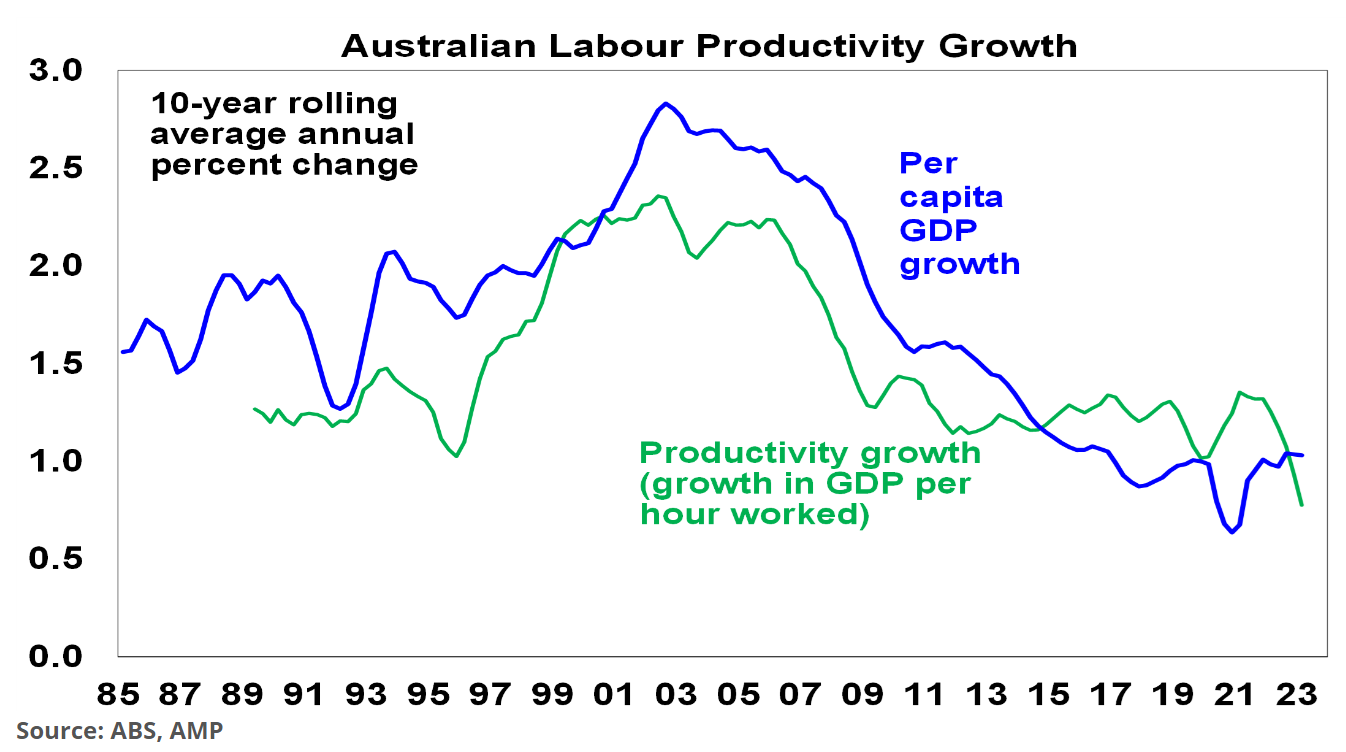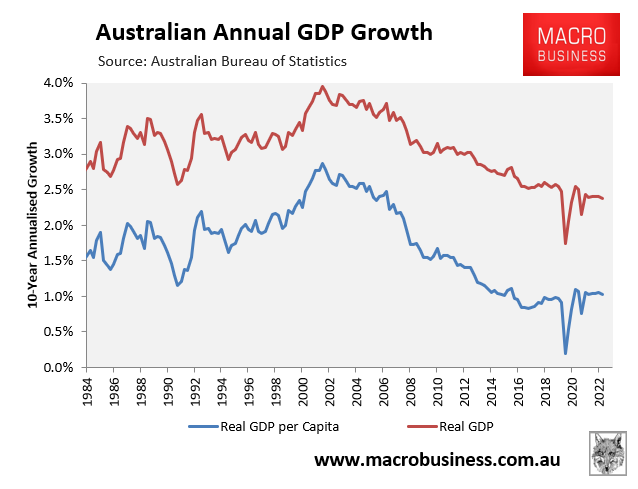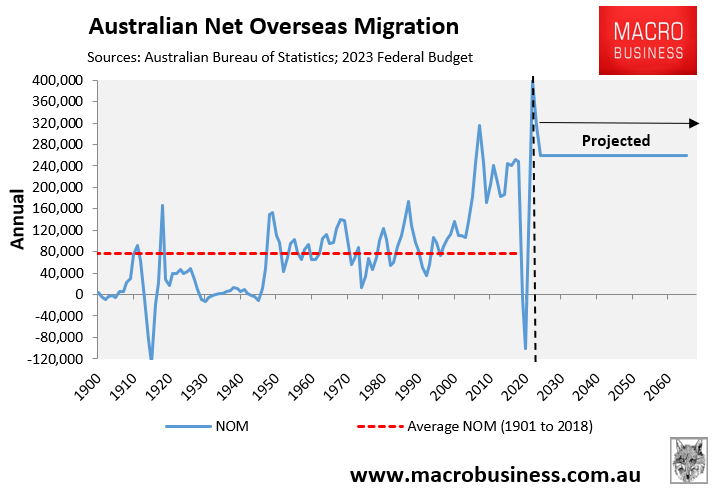AMP chief economist, Shane Oliver, has published a report showing how Australia’s productivity growth has collapsed over the past 20 years, which has degraded living standards:

According to Oliver, “the last 20 years have seen a slump in productivity growth in Australia from over 2% pa to less than 1% pa. This has curtailed growth in living standards and real wages. It will adversely affect asset class returns if allowed to persist”.
“The longer-term pattern in labour productivity growth has correlated with a similar pattern in growth in GDP per capita (or GDP per person)”.
“Roughly speaking the slowdown in productivity growth from 2.2% pa in the 1990s to 0.8% pa over the last 10 years means that after a 10-year period annual GDP will be 13% (or $350bn) less than otherwise, which means lower material living standards than otherwise”:

“Of course, we can make up for this by faster population growth as has been the case since the mid-2000s but this does not address the negative impact on living standards per person”.
“After nearly two decades of policy drift, declining productivity growth is weighing on growth in living standards and sustainable real wages growth”.
The federal government has papered over Australia’s poor productivity growth by ramping immigration.
Doing so has kept aggregate GDP ticking over, while per capita GDP growth has collapsed:

The mass immigration program run since the early 2000s has been badly managed, resulting in serious infrastructure bottlenecks and declining liveability in Australia’s largest cities, including:
- A severe shortage of hospital beds and chronic ambulance ramping;
- A severe shortage of schools;
- A severe rental crisis, with vacancy rates at record lows and rents rising at double-digit rates; and
- A severe shortage of public housing.
It has also contributed directly to Australia’s declining productivity via capital shallowing (think increased traffic congestion), as well as discouraging businesses from investing in labour-saving technologies and automation, since they can just grab a low-cost migrant instead.
Shane Oliver noted the productivity destroying impact of mass immigration in his note above:
“Very strong population growth with an inadequate infrastructure and housing supply response has led to urban congestion and poor housing affordability which contribute to poor productivity growth”.
Sadly, the federal government has doubled-down on this model by lifting its net overseas migration (NOM) forecast to 400,000 in 2022-23, 315,000 in 2023-24, before stabilising at an insane 260,000 – i.e. 40,000 higher than the extreme immigration leading up to COVID:

Doubling down on ‘Big Australia’ will have far-reaching negative consequences in the future.

